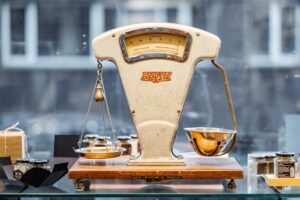
£30
Bet £10 & Get £30 in Free Bets!
Claim
For new customers. Min deposit requirement. Free Bets are paid as Bet Credits and are available for use upon settlement of qualifying bets. Min odds, bet and payment method exclusions apply. Returns exclude Bet Credits stake. Time limits and T&Cs apply.
Claim

£50
Bet £10, Get £50 in Free Bets
Claim
18+ New UK+ROI Customers only. Certain deposit methods & bet types excl. Min first £/€10 bet within 14 days of account reg at min odds 1/2 to get 5x £/€10 free bets. Free bets available to use on selected sportsbook markets only. Free bets valid for 7 days, stake not returned. Restrictions + T&Cs apply.
Claim

£30
Up to £30 Matched Free Bet + £30 Uber Eats Voucher
Claim
New UK customers only. Min Stake: £5. Maximum Free Bet: £30. First bet on a Football, Horse Racing, Tennis, Cricket or Basketball multiple with 3+ selections. Overall odds: 3.00 (2/1) or higher. Free Bets available upon settlement of the qualifying bet. 100 Free Spins on More Unusual Suspects (£0.10 per spin) credited on settlement of qualifying Acca bet. No wagering requirements on free spin winnings. Earn a £30 Uber Eats Voucher on successful Acca qualification. Debit Card deposit only (exclusions apply). This offer is valid 7 days from the new account being registered. 18+ GambleAware.org. Bet the Responsible Way. Full Terms apply
Claim

£60
Bet £10 & Get £60 in Free Bets
Claim
Place a £10 fixed odds single or £10 each-way bet at minimum odds of 1/2 and get 3 x £10 free fixed odds bets, 3 x £5 Total Goals football spread bets and 3 x £5 Winning Favourites spread bets and a £1 racing Race Index spread bet. 18+ www.gambleaware.org. Spread betting losses can exceed deposit.
Claim

£25
Bet £50 and get a £25 free bet
Claim
Place a real cash bet of £50 (or more) to qualify for a Free £25 Bet.
Offer available to new customers only signing up with Promo Code BET50GET25 only.
Promotion valid from 5th June 2025 to 31st July 2025. Qualifying bet must be placed at odds of Evens (2.0) or greater. Single Bets only. Applies to first bet placed. Available on bets placed online. Free Bet will be credited within 24 hours of qualifying bet. Free Bet will expire after seven days. Void bets do not qualify. Cashed out bets do not qualify. Free Bet awards can be used online only. Star Sports decision is final.
Offer available to new customers only signing up with Promo Code BET50GET25 only.
Promotion valid from 5th June 2025 to 31st July 2025. Qualifying bet must be placed at odds of Evens (2.0) or greater. Single Bets only. Applies to first bet placed. Available on bets placed online. Free Bet will be credited within 24 hours of qualifying bet. Free Bet will expire after seven days. Void bets do not qualify. Cashed out bets do not qualify. Free Bet awards can be used online only. Star Sports decision is final.
Claim

£30
Bet £5, Get £30 in Free Bets!
Claim
18+ New UK+ROI Customers only. Certain deposit methods & bet types excl. Min first £5 bet within 14 days of account reg at min odds 1/2 to get 6 x £5 free bets (selected sportsbook markets only, valid 7 days, stake not returned). Restrictions + T&Cs apply.
Claim

£5
SCORE A £5 FREE BET TO USE ON FOOTBALL ACCAS EVERY WEEK WITH OUR ACCA CLUB
Claim
UK/IE 888sport account holders only. Runs weekly until 31/12/25. Min £20 cash stake on Football acca (3+ legs, min combined odds 3/1 (4.0)) placed Mon–Sun. Max One £5 Free Bet per Qualifying Bet. Boosts excl. Free Bet credited within 72 hours of settlement, valid for 7 days, must be used in one stake on any Football Acca, with 3+ legs (excl. virtuals), and cannot be used on system/combination/part-paid bets. Full T&Cs apply.
Claim




